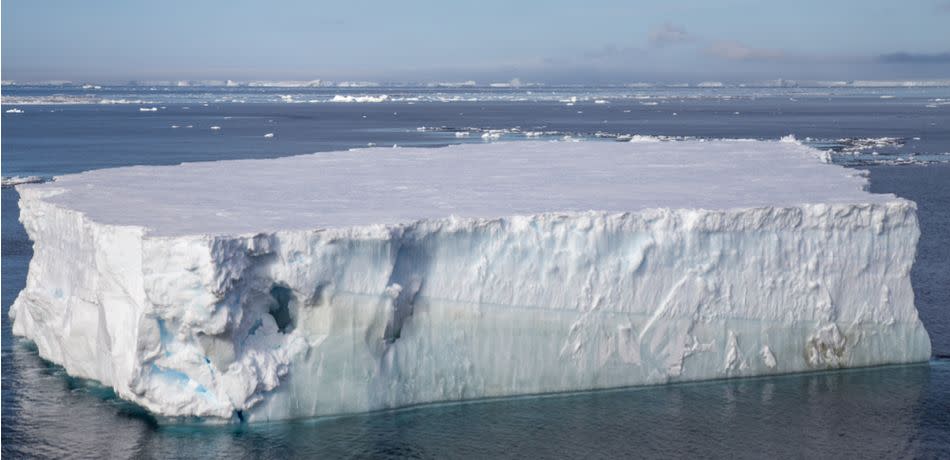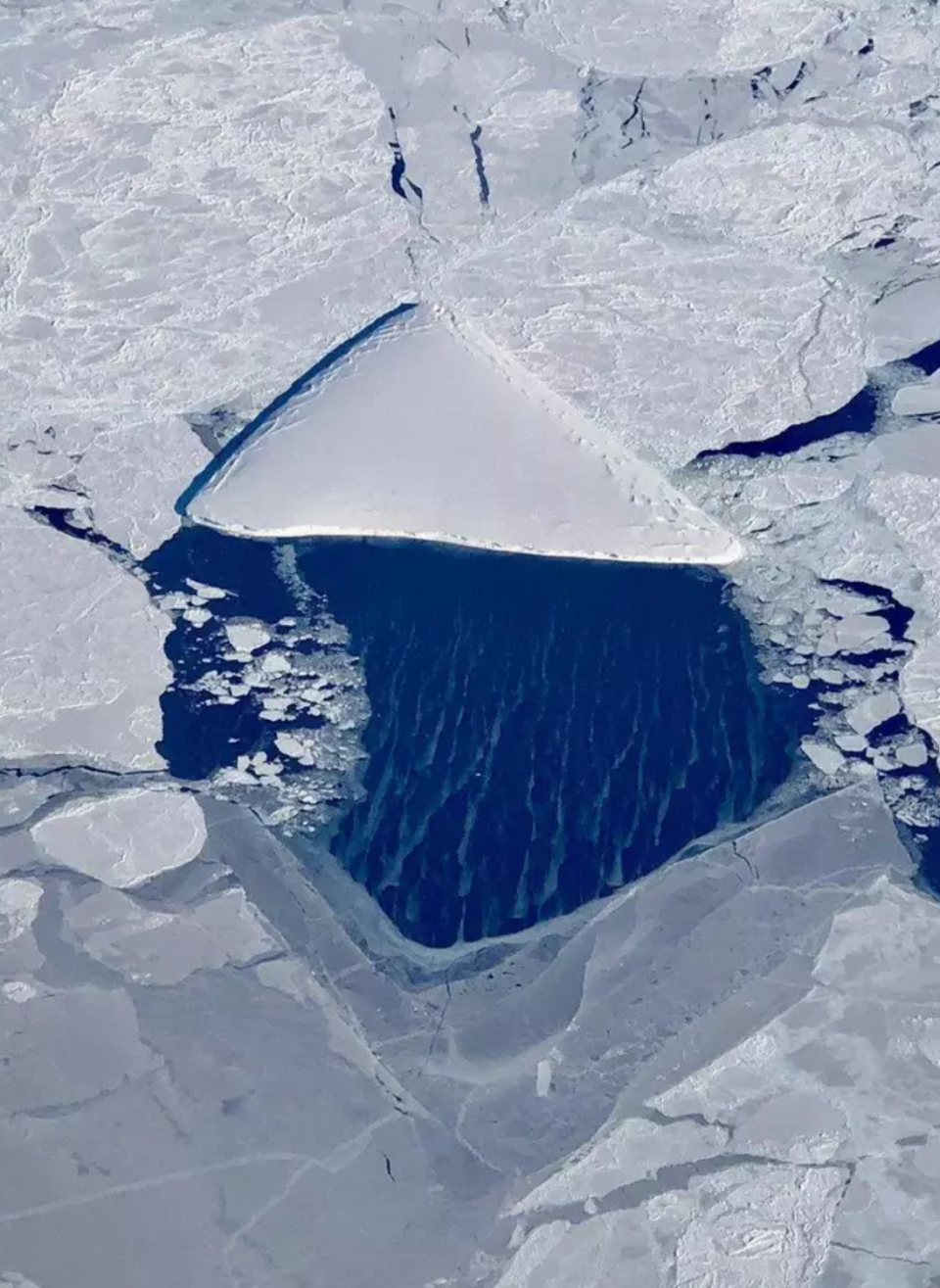Mysterious 'perfectly rectangular' iceberg breaks off Antarctica

It looks so perfect that it seems Photoshopped – but a strange perfectly rectangular iceberg near Antarctica is a natural phenomenon, NASA scientists say.
The mysterious slab-like iceberg, up to a mile wide, was spotted near the Larsen C ice shelf, and the sharp angles hint that it broke off very recently.
It’s described as a ‘tabular iceberg’ – with steep sides and a flat top, typically formed by ‘snapping off’ from an ice shelf, experts say.
Many of the largest icebergs on record have formed this way.
From yesterday's #IceBridge flight: An extremely large iceberg off of the Larsen Ice Shelf encased with thicker, ridged sea ice. pic.twitter.com/7LctelxUBM
— NASA ICE (@NASA_ICE) October 19, 2018

NASA said, ‘A tabular iceberg can be seen on the right, floating among sea ice just off of the Larsen C ice shelf.
‘The iceberg’s sharp angles and flat surface indicate that it probably recently calved from the ice shelf.’

NASA scientists captured the image on an IceBridge flight, an airborne survey of polar ice.
NASA scientist Kelly Brunt told LiveScience, ‘’What makes this one a bit unusual is that it looks almost like a square.
Read more from Yahoo News UK:
Man on nudist beach survives shark attack by punching it in the head
Online sellers are ‘paying people to give positive reviews’ to dupe customers
Saudi Arabia claims journalist Jamal Khashoggi was murdered in ‘rogue operation’
Lioness kills father of her three cubs in their enclosure at Indianapolis Zoo
Ryanair passenger may ‘get away with’ racist tirade because airline wanted to take off, says MP
Last year, the iceberg A-68 broke off Antarctica’s Larsen C ice shelf after years of cracks spreading across the ice.
The ice shelf is about 1,100ft thick and floats on the edge of West Antarctica.
The calving of the huge iceberg reduced the size of the ice shelf by 12%.
Scientists from the European Space Agency wrote in September, ‘Sea ice to the east and shallow waters to the north kept this giant berg, named A68, hemmed in.
‘So for more than a year it wafted to and fro, but never left its parent ice shelf’s side. Strong winds blowing from Larsen C have finally given it the push it was waiting for.
In early September 2018, these winds pushed the southern end of the berg out into the Weddell Gyre.
‘This clockwise drift of ocean waters and sea ice flowing north past the Larsen shelf, which can be seen in the animation as a flow from right to left, has rotated A68 out into the Weddell Sea.
‘Here it is freer to float away and be carried further north into warmer waters.’



